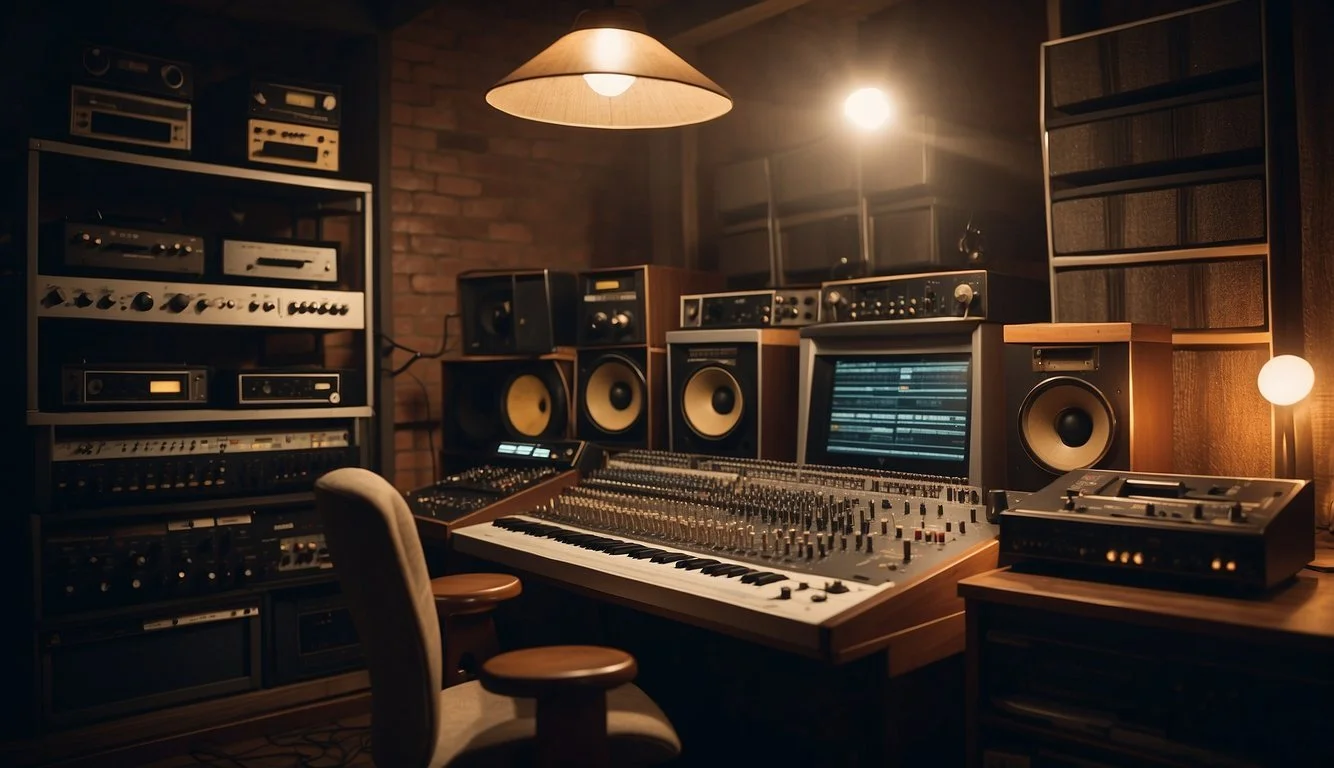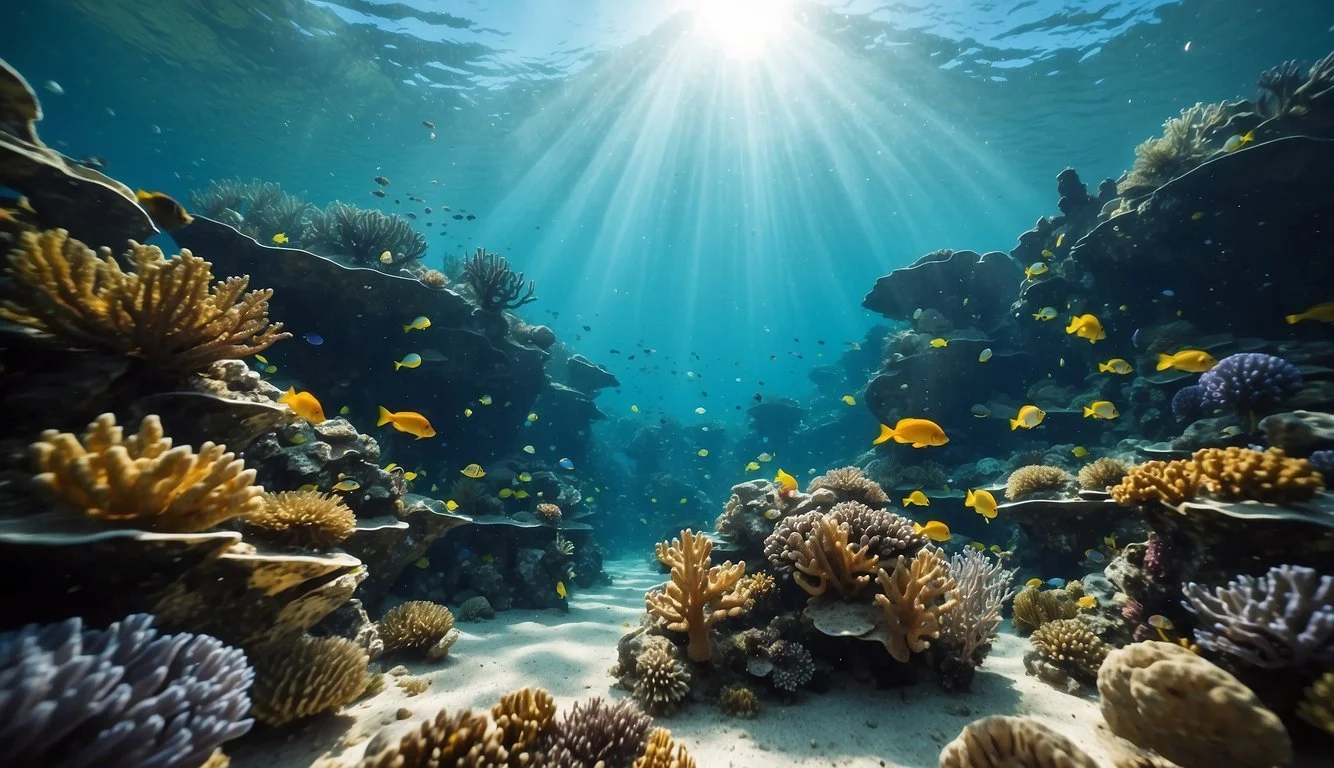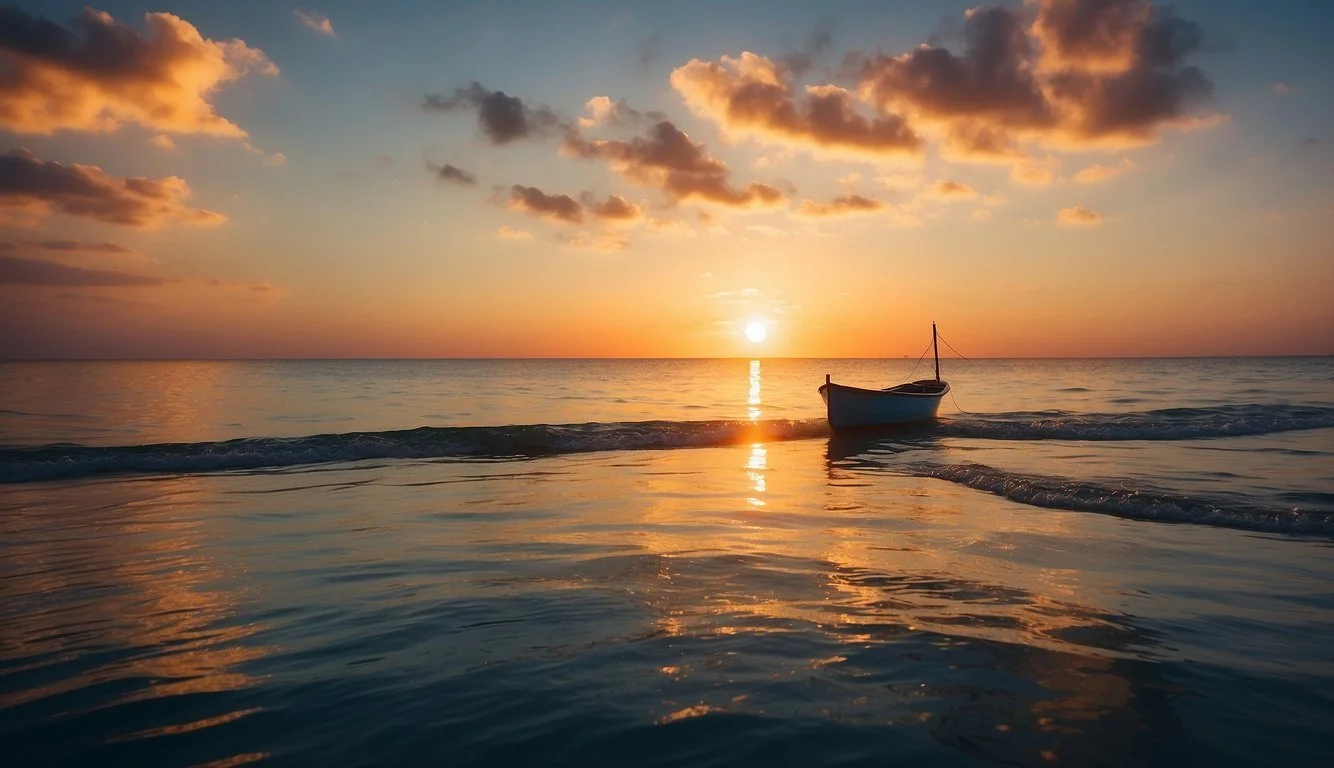Documentary Review: The Deepest Breath (2023)
A Deep Dive into Freediving
Laura McGann's "The Deepest Breath" (2023) offers a gripping dive into the lives of freedivers who push the limits of human endurance. The film, soon to be available on Netflix, not only captures breathtaking underwater footage but also tells an emotional story of courage and tragedy. Through the lens of record-breaking freedivers and heroic safety divers, the documentary navigates the risky yet mesmerizing world beneath the ocean's surface.
The documentary emphasizes the physiological and psychological challenges faced by freedivers. It highlights their immense bravery as they plunge into the ocean without any breathing apparatus, relying solely on their trained abilities. The film's stunning visuals juxtapose the beauty of the ocean with the dangers that lurk within it, making for an exhilarating and heart-stopping viewing experience.
"The Deepest Breath" also delves into archival footage and interviews that provide a comprehensive look at the sport's history and its pioneers. This context adds depth to the narrative, making the viewers appreciate the monumental achievements and the high stakes of freediving.
Overview of 'The Deepest Breath'
"The Deepest Breath," directed by Laura McGann, is a visually stunning documentary that profiles the world of freediving through the stories of Italian free diver Alessia Zecchini and safety diver Stephen Keenan. The film combines breathtaking underwater cinematography with intense, personal narratives.
Plot Summary
The documentary follows Alessia Zecchini, an Italian free diver determined to break world records, and Stephen Keenan, a skilled safety diver. Their paths cross in the high-stakes environment of freediving, where the sport's inherent dangers heighten the narrative tension. The film chronicles their journey, highlighting Alessia's ambition and Stephen’s dedication to safety.
As they navigate the underwater world, the film delves into their backgrounds, challenges, and the sacrifices made in pursuit of their dreams. The documentary also poignantly captures the tragic undertow that binds their fates, making it a compelling and emotive watch.
Film Setting
"The Deepest Breath" is set against the awe-inspiring backdrop of the deep seas. The underwater scenes are particularly striking, featuring stunning visuals that showcase the beauty and peril of the ocean depths. These aquatic settings are integral to the film's narrative, providing a visual contrast to the human endurance and vulnerability depicted.
Filming occurred in various locations known for freediving, adding authenticity and depth to the story. The underwater cinematography stands out, making the viewers feel immersed in this hidden, mesmerizing world. This setting not only enhances the visual appeal but also underscores the dangers faced by the divers.
Production Background
The making of "The Deepest Breath" involved a clear directorial vision and a strong backing in terms of funding and logistical support.
Directorial Vision
Laura McGann directed "The Deepest Breath" with a specific vision prioritizing both emotional depth and visual splendor. She carefully crafted the narrative around the lives of Stephen Keenan and Alessia Zecchini, emphasizing their achievements and challenges in the extreme sport of freediving. McGann aimed to bring the audience closer to the visceral and psychological experiences of her subjects.
She used a combination of breathtaking underwater footage and personal interviews. Additionally, McGann intentionally maintained suspense throughout the film by selectively withholding information, ensuring that the viewers remained engaged and connected to the unfolding story.
Funding and Support
Significant financial backing and institutional support played crucial roles in the production of "The Deepest Breath." The film was produced with the collaboration of Netflix, a major backer that helped secure the resources needed for high-quality underwater cinematography and extensive location shoots.
Financial contributions also came from other production companies and grants, ensuring the documentary could cover diverse locations and high-tech filming equipment. This support allowed McGann to hire top-tier diving experts and safety professionals, crucial for the demanding underwater shoots. The coordinated efforts from these backers ensured the film's production maintained high standards of quality and safety throughout its making.
Cinematography and Visuals
The cinematography in "The Deepest Breath" captures the awe-inspiring beauty of the underwater world, enhancing both the narrative and emotional depth. The visual presentation is essential in portraying the majesty and peril of free diving.
Filming Techniques
Laura McGann employs a variety of filming techniques to bring the underwater world to life. The use of underwater cameras creates a visceral experience for the audience, making them feel immersed in the aquatic environment. Long shots help emphasize the vastness and isolation of the deep sea, while close-ups highlight the physical and emotional intensity faced by free divers. The film utilizes slow-motion sequences to accentuate moments of tension and grace underwater, adding dramatic effect to critical scenes.
Visual Style
"The Deepest Breath" features a visual style that combines rich, vibrant colors with stunning, high-definition imagery. The filmmakers expertly use natural lighting to enhance the hues and textures of the underwater scenes. This approach makes the aquatic world appear both mesmerizing and daunting. The contrast between the blue depths and the divers’ gear accentuates the vulnerability and bravery of the protagonists. Additionally, the documentary includes sweeping panoramic views along with crisp, detailed close-ups, creating a balance that captures the full spectrum of the free diving experience.
Themes and Messages
"The Deepest Breath" weaves together compelling narratives focused on both environmental awareness and the profound bonds between people. The film resonates with viewers through its exploration of these critical themes.
Environmental Concerns
The documentary highlights the underwater world's fragile beauty and the pressing need to protect our oceans. Through stunning underwater footage, it showcases the diversity of marine life and the symbiotic relationship between humans and the ocean.
Environmental damage from human activities such as pollution and overfishing is a recurring theme. The film urges viewers to recognize their impact on marine ecosystems and promotes conservation efforts. By immersing the audience in the deep sea's wonders and dangers, it raises awareness about the urgency of safeguarding these environments for future generations.
Human Connection
"The Deepest Breath" delves deeply into the relationships formed within the freediving community. It offers a poignant look at the camaraderie and trust essential for a sport that pushes human boundaries. The bonds between divers are underscored by shared risks and profound mutual respect.
Through the personal stories of freedivers, the documentary emphasizes themes of perseverance, resilience, and the human spirit. It also touches on the emotional toll of the sport, including the grief and loss faced by those in the community. These elements underscore the strength of human connections even in the most extreme circumstances.
Soundtrack and Audio Design
The soundtrack and audio design of "The Deepest Breath" play crucial roles in immersing the viewer and enhancing the narrative's emotional depth. They utilize a blend of musical compositions and sound design elements to evoke the underwater world's beauty, thrill, and peril.
Original Score
The original score for "The Deepest Breath" was composed by Emmy-winning Nainita Desai. Her music deftly combines strings, keys, and vocalizations, creating an enthralling auditory experience. Each piece is carefully designed to reflect the documentary's varied moods - from the serene moments of descent to the intense, high-stakes dives. Desai’s compositions not only capture the physical aspects of free-diving but also the psychological journeys of the divers, making the underwater sequences even more captivating. Her use of music complements the visual aesthetics, transforming scenes into deeply moving experiences.
Sound Design Elements
The sound design of "The Deepest Breath" is meticulously crafted to enhance the immersion into the underwater environment. Every bubble, heartbeat, and underwater current sound is intentionally amplified to draw viewers into the depths alongside the divers. The balance of natural soundscapes with subtle audio enhancements ensures that each moment underwater feels both realistic and heightened. The sound design also plays a critical role in building tension, particularly during the suspenseful and risk-laden dives. The interplay between silence and sudden bursts of sound effectively mirrors the divers’ experiences, keeping the audience on edge and deeply engaged with the narrative. The soundscape, paired with the visual brilliance, creates an almost palpable sense of diving into the ocean’s depths.
Critical Analysis
"The Deepest Breath" has garnered attention for its stunning underwater footage and its perilous depiction of free-diving. This segment explores the documentary's reception amongst critics and everyday viewers.
Critical Reception
Critics have noted the exceptional cinematography in "The Deepest Breath." The film features breathtaking underwater sequences that capture the serene yet dangerous nature of free-diving. Laura McGann, the director, carefully relays stories with suspense, effectively engaging the audience.
Several reviews highlight that the documentary keeps viewers on edge by omitting certain elements until crucial moments. The poignant storytelling and dramatic tension have drawn comparisons to other high-stakes documentaries, such as "Free Solo." However, some reviews also mention that the film's pacing can be uneven, affecting its overall momentum.
Viewer Response
Viewers have praised the documentary for its intense and emotional recounting of free-diving adventures. The relationship between the record-breaking diver and the heroic safety diver has particularly resonated with audiences. The film’s release on Netflix has broadened its reach, garnering a mix of awe and anxiety among viewers who appreciate extreme sports.
Feedback from the audience often mentions the film's capacity to evoke a deep sense of immersion. The visually captivating underwater scenes and the high-risk nature of free-diving evoke strong emotional responses. Yet, some viewers find the suspenseful build-up and eventual revelations to be stressful rather than exciting, indicating mixed feelings towards the method of storytelling chosen by the director.
Cultural Impact and Relevance
The Deepest Breath (2023) highlights the extraordinary world of free diving, a sport that captures the human spirit's quest for exploration and endurance. This documentary adds to the cultural tapestry by presenting an unvarnished look at the challenges and triumphs faced by individuals engaging in extreme sports.
The film features Alessia Zecchini, a renowned free-diver, whose story resonates with audiences worldwide, emphasizing the universal themes of perseverance and ambition. Her achievements have inspired many, encouraging a broader appreciation for lesser-known sports.
Through its gripping underwater footage, The Deepest Breath enhances awareness about the ocean's enigmatic beauty and its potential dangers. This duality captures viewers' imaginations, positioning the ocean as both a playground and a perilous realm.
The documentary’s release, following the Titan submersible disaster, adds a layer of timeliness to its narrative. It underlines the human fascination with the depths of the sea, even when faced with significant risks. This parallel between real-world events and the movie's content underscores its societal relevance.
By focusing on the personal journeys of its subjects, The Deepest Breath fosters a connection between viewers and the protagonists. This storytelling approach invites audiences to reflect on their boundaries and what drives them to exceed them.
In addition, the film fosters a sense of community among free-divers and ocean enthusiasts, bolstering the sport’s visibility. This increased attention can lead to more support and resources for those involved, nurturing a growing community.
In essence, The Deepest Breath plays a significant role in broadening the cultural dialogue surrounding human limits, the environment, and extreme sports.
Interviews and Discussions
The documentary "The Deepest Breath" offers a comprehensive look at freediving through expert opinions and insights from the cast and crew, enhancing the overall narrative.
Expert Opinions
The film includes commentary from leading figures in the freediving community. These experts explain the physical and mental challenges athletes face during their dives. They also discuss the techniques and safety protocols that are crucial for the sport.
Using archive footage and interview recordings, these professionals give context to the dangers and allure of freediving. This perspective helps to illustrate why individuals are drawn to such an extreme and perilous activity. The experts' insights provide a deeper understanding of the sport's complexity.
Cast and Crew Insights
Insights from the cast and crew, including freedivers Stephen Keenan and Alessia Zecchini, are pivotal to the narrative. They share personal experiences, including triumphs and tragedies, adding an emotional depth to the documentary.
Director Laura McGann explains creative choices, emphasizing the mix of recreations, photographs, and recent interviews used. This approach aims to authentically portray the freedivers' journey. Through these stories, viewers gain a more intimate look at the passion driving these athletes to push their limits underwater.





